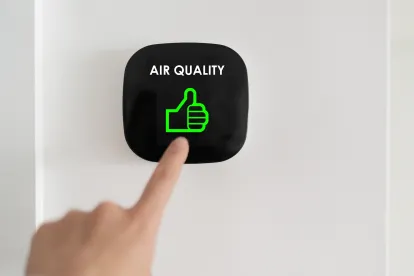On January 5, EPA added 1-bromopropane (1-BP), which is also called n-propyl bromide, to the list of Hazardous Air Pollutants (HAP) under the federal Clean Air Act. 1-BP is used as a substitute for other HAPs in dry cleaning and other industries. This marks the first addition to the list since it was established as part of the 1990 Clean Air Act Amendments. The addition was prompted by petitions to list 1-BP by the Halogenated Solvents Industry Alliance and the New York State Department of Environmental Conservation.
EPA is expected to issue additional guidance and regulation under the National Emission Standards for Hazardous Air Pollutants (NESHAP) that will further govern the emission of the 1-BP; in the interim, companies that emit 1-BP need to consider how the addition of 1-BP to the list of HAPs will affect their permitting, emissions reporting, and regulatory compliance.
The Rapid Rise of 1-BP Leads to Two Petitions
1-BP is a solvent used in degreasing, dry cleaning, spray adhesives, and aerosol solvents. It is also used as an intermediate chemical in the manufacture of pharmaceuticals and agricultural products. Manufacturers and importers of 1-BP promoted the compound as a substitute for solvents that were regulated under the NESHAP, prompting the 2010 petition from the Halogenated Solvents Industry Association. But the increasing use of a chemical whose health effects had only recently begun to be studied as a substitute for the dry cleaning solvent perchloroethylene (PERC) also caught the attention of New York’s environmental regulator, which filed a petition the following year. In 2020, EPA granted the two petitions.
A Potentially Lengthy Process Before New Standards Adopted
For each listed HAP, EPA must establish both technology-based and risk-based standards that are tied to a specific industry group (known as a “source category”). The first step is for EPA to establish a maximum achievable control technology (MACT) for controlling emissions of 1-BP for those source categories that emit the HAP. This is a time-consuming process and EPA has not identified, at present, when it expects to issue proposed MACT standards.
New standards have a significant impact on the regulated community. Major sources of HAPs that emit 10 tons per year of any single HAP or 25 tons per year of a combination of HAPs can be subject to a MACT standard. A MACT standard is a stringent control standard, which can require process changes, material substitutions, equipment enclosure, emissions capture, operating procedures, and work practices — or any combination of these. Thus, the addition of a new HAP like 1-BP can subject both new and existing major sources to additional regulation.
Furthermore, even before a MACT standard is published, facilities that emit 1-BP must consider how the addition of 1-BP to the list of HAPs may impact its compliance obligations. For example, 1-BP emissions will now count toward the calculation of HAP emissions for emission reporting and the determination of applicability of permitting requirements under existing Clean Air Act regulations.





 />i
/>i

